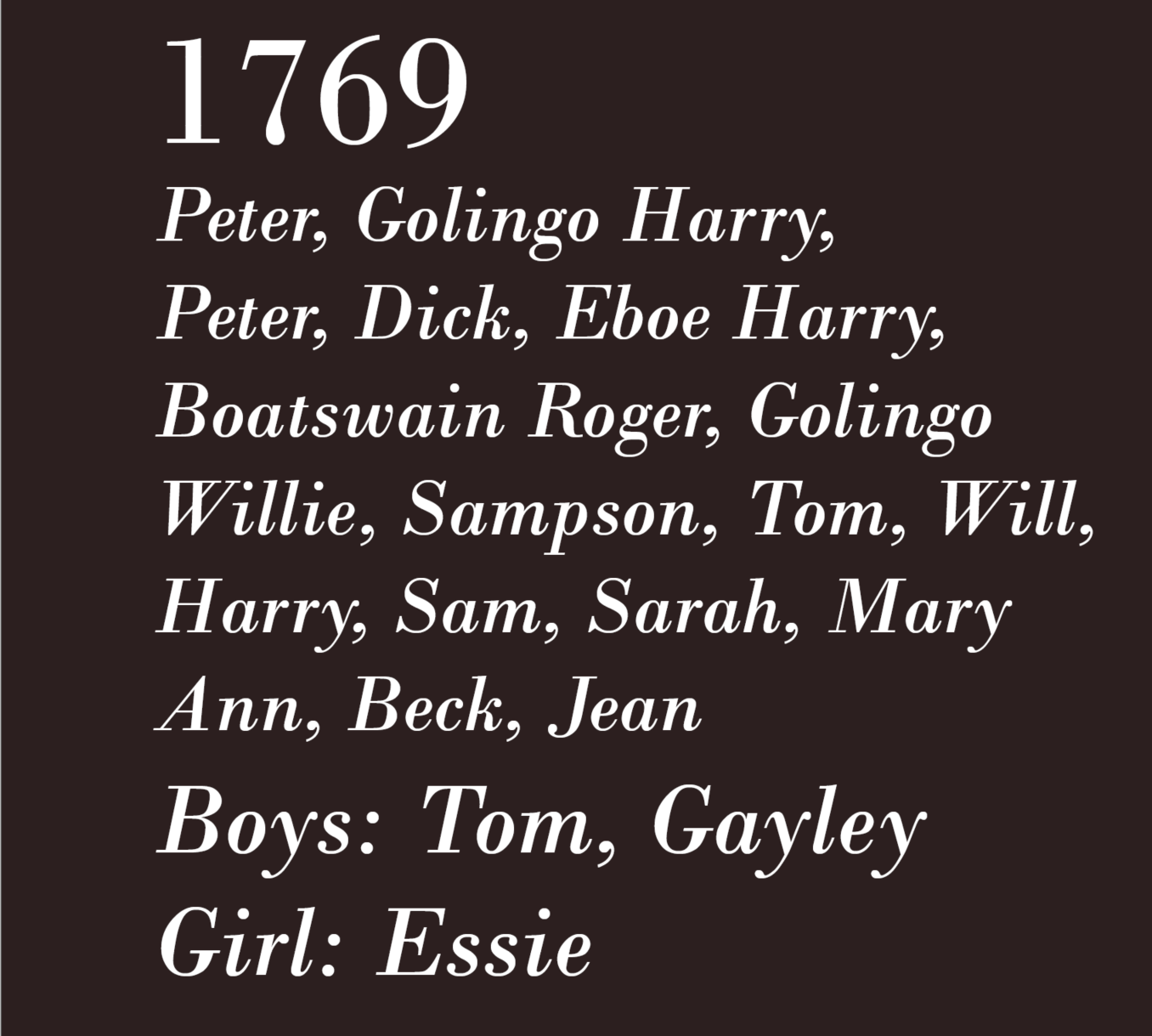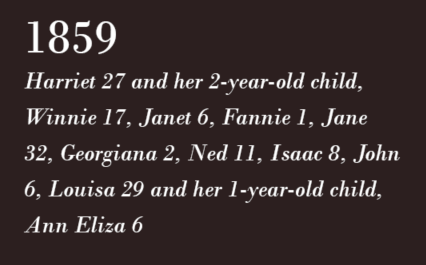|
Little was recorded about the multitude of enslaved people in and around Harpers Ferry from colonial times through the end of American slavery. We remember them by sharing their names as they appeared in record books or newspapers. Stories of enslaved people in Harpers Ferry help put John Brown's Raid into context and provide a view of the dehumanizing institution of slavery and the resiliency of those caught in its grasp. Explore their stories.

1769First record of enslaved people in the Harpers Ferry areaA 1769 record of property lists 14 men, two boys, four women and one girl as enslaved by John Semple, the owner of Keep Tryst Furnace, which was located between Bolivar Heights and School House Ridge along the Potomac River. Semple declared bankruptcy in 1769 which trigger the assessment of his property including the valuation of human lives. Likely these enslaved people would have been sold to pay off Semple's debts.The names of the enslaved people hint that several were likely born in Africa. Golingo possibly refers to Golunga-Alto, a Portuguese colony in modern Angola. Eboe was an alternate spelling of Igbo, an ethnic group in Nigeria. Using these terms with their names may indicate the enslaved person's birthplace. 1782Town founder, Robert Harper, used enslaved labor to build his wealth
"I hereby give leave and bequeath unto my nephews ... the whole amount of what my negro wench Beck shall bring to be equally divided and shared amongst them and for that purpose it is my will that my Executors shall as soon as convenient for them after my decease lease the said Negro Wench Beck to be sold." |
Last updated: December 19, 2023


